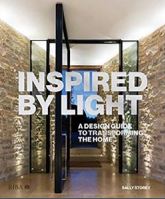Share
27.01.2020
Olafur Eliasson: In Real Life
Posted by Lighting Design International on 27 Jan 2020
Olafur Eliasson: In Real Life - exhibition at the Tate Modern
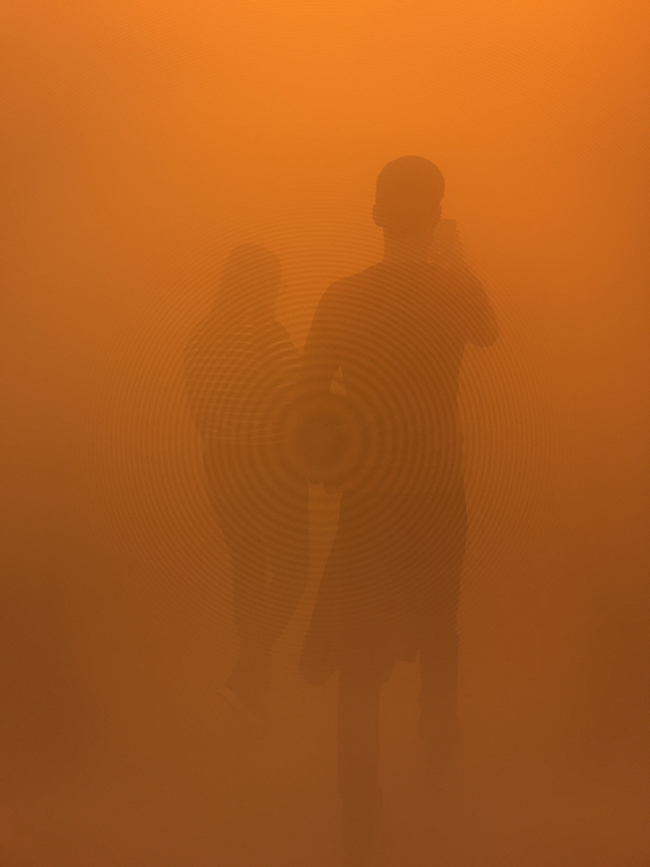
Olafur Eliasson returned to the Tate Modern with a major exhibition last year following his world-renowned installation The weather project in 2003. Audiences could discover the full range of his practice spanning three decades. Bringing together around 40 works – almost all of which had never been seen in this country before, including some created especially for the exhibition – Olafur Eliasson: In real life offered unmissable experiences and showed how Eliasson brings to our attention some of today’s most urgent issues.
Some artworks in the exhibition introduced natural phenomena such as rainbows to the gallery space. Others used reflections and shadows to play with the way we perceive and interact with the world. Many works resulted from the artist’s research into complex geometry, motion patterns, and his interest in colour theory.
Within the exhibition was an area which explores Eliasson’s deep engagement with society and the environment. You could delve into the artists perspective on issues of climate change, energy, migration as well as architecture.
Eliasson spent considerable time in Iceland as a child, and natural phenomena such as water, light and mist have been key areas of investigation throughout his career. He creates works that continually prompt viewers to think about the nature of perception.
As a lighting designer – it was so exciting to see and experience many of his works which use light as the primary medium. In the following blog, I will focus on his works in the exhibition which use light, mirrors and colour to keep it topical. Enjoy!
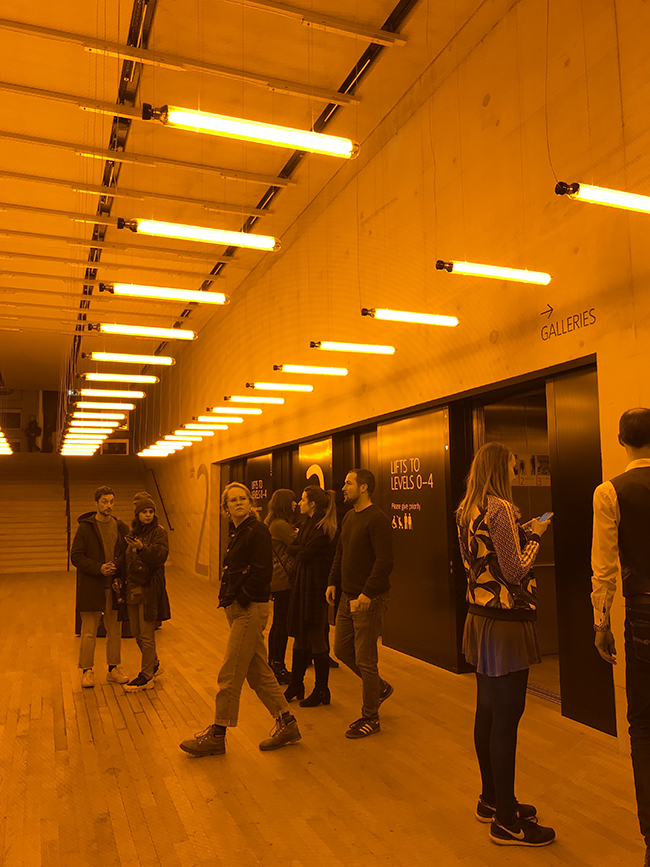
Room for one colour, 1997 by Olafur Eliasson.
As you first enter the floor for the exhibition (exiting the lift doors) – you are instantly emerged in one of Eliasson’s most famous artworks - Room for one colour. In the installation, the entire space in the lift area is bathed in light from mono-frequency lamps that emit light of around 589 nanometres in wavelength, in the yellow region of the visible spectrum. You only see a saturated yellow light that makes all colours appear to be shades of yellow, grey and black.
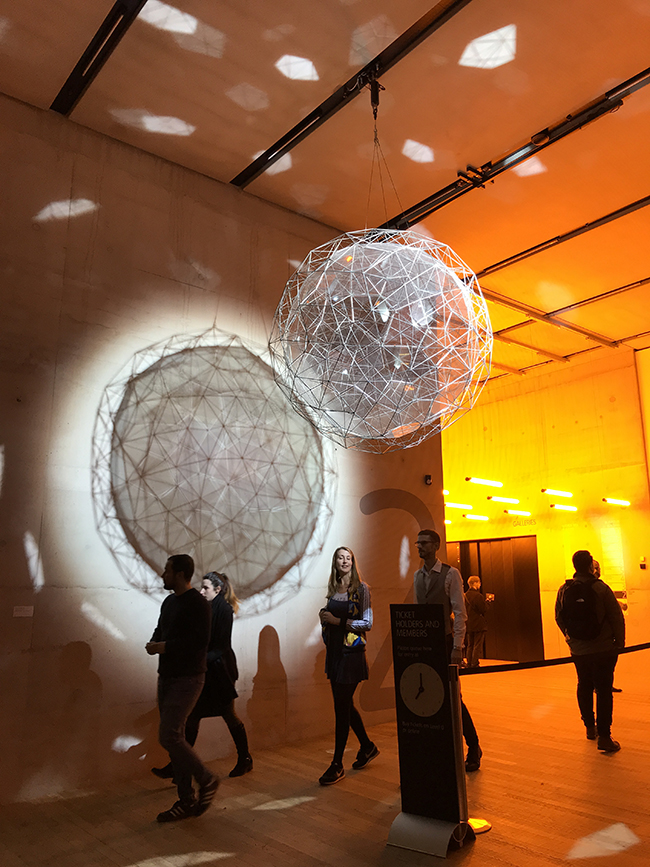
Stardust particle, 2014 by Olafur Eliasson.
As you move out of the lift area (and consequently Room for one colour) you find yourself standing underneath Stardust particle. This hanging sculpture combines two irregular polyhedra, embedding one within the other to form a single spheroid made of partially reflective, translucent filter glass and thin stainless steel struts. The vertices of the outer polyhedron, which is indicated as a steel framework, correspond to the centres of the glass pentagonal faces of the inner form. The artwork changes appearance as the panes of partially reflective filter glass catch the light and reflect the surroundings.
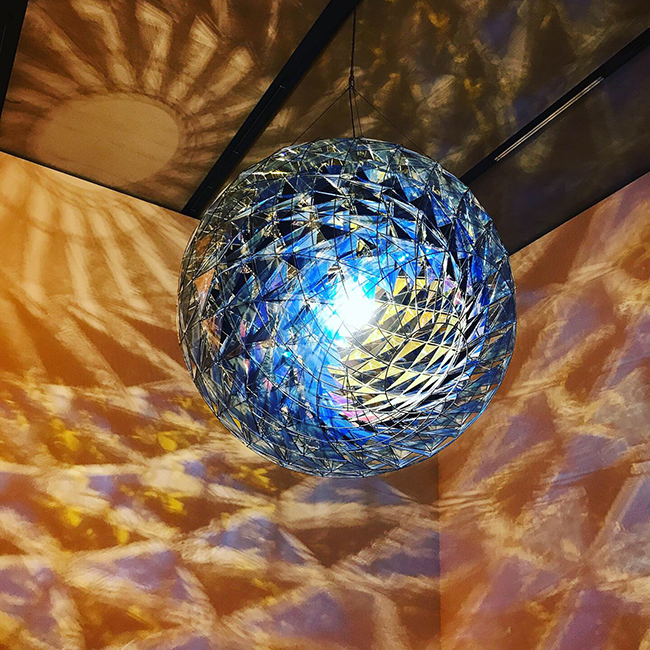
Cold wind sphere, 2012 by Olafur Eliasson.
Hidden away, around the corner of the main entrance is Cold wind sphere. This geometrical structure is composed of spheres in three different sizes that are layered within each other. Glass triangles in three distinct shades of blue are fitted between these layers. The outer surface of the largest sphere is composed of an almost-transparent grey-tinted glass.
A light bulb situated at the centre of Cold wind sphere casts shadows and reflections into the surrounding room in the shades of the individual glass pieces as well as in the colours created by their superimposition.
The appearance of the sphere depends on the position of the viewer. The innermost layer of glass employs a special colour-effect filter glass that reflects light in its complementary colour and appears opaque from certain perspectives.
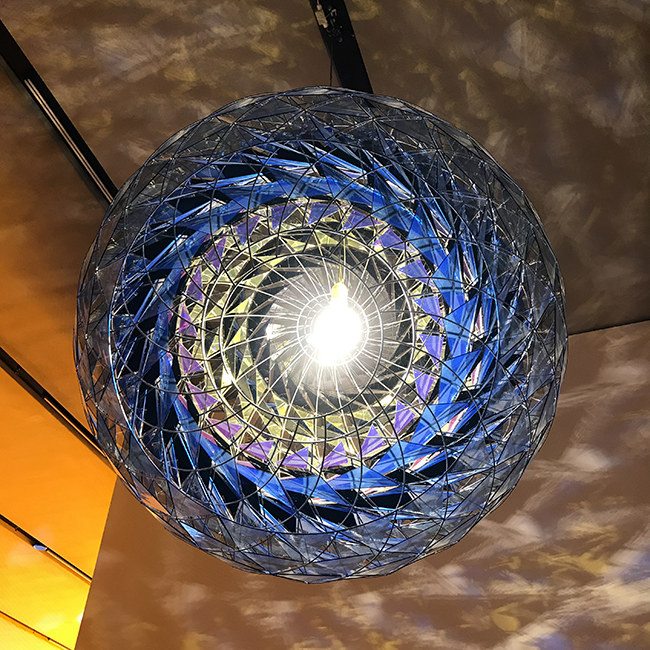
Close up of Cold wind sphere, 2012 by Olafur Eliasson.
The title, Cold wind sphere, refers to a model for an atmospheric system. Its core spiral structure is reminiscent of fossil vertebrates and biomechanical forms.
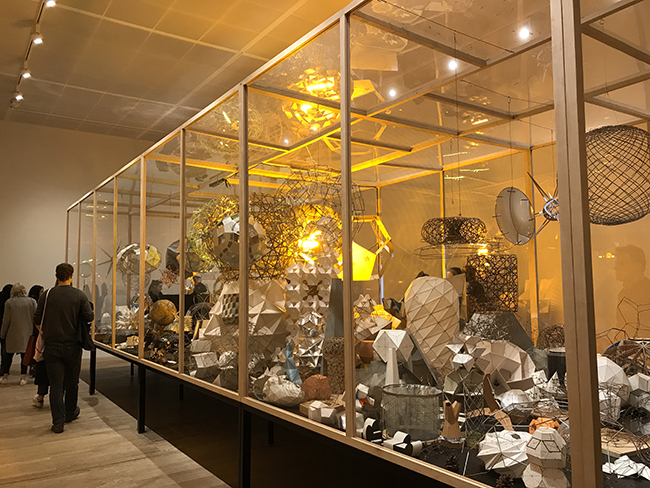
Model room contains 450 prototypes of Eliasson's work.
The first room of the show is instantly dramatic. Since 1996, Eliasson has collaborated with Einar Thorsteinn, an Icelandic artist and architect. A cabinet of their investigations, the Model room contains numerous intricately constructed models and Marquette’s of various sizes. These represent a selection of prototypes, mock-ups, and geometrical studies.
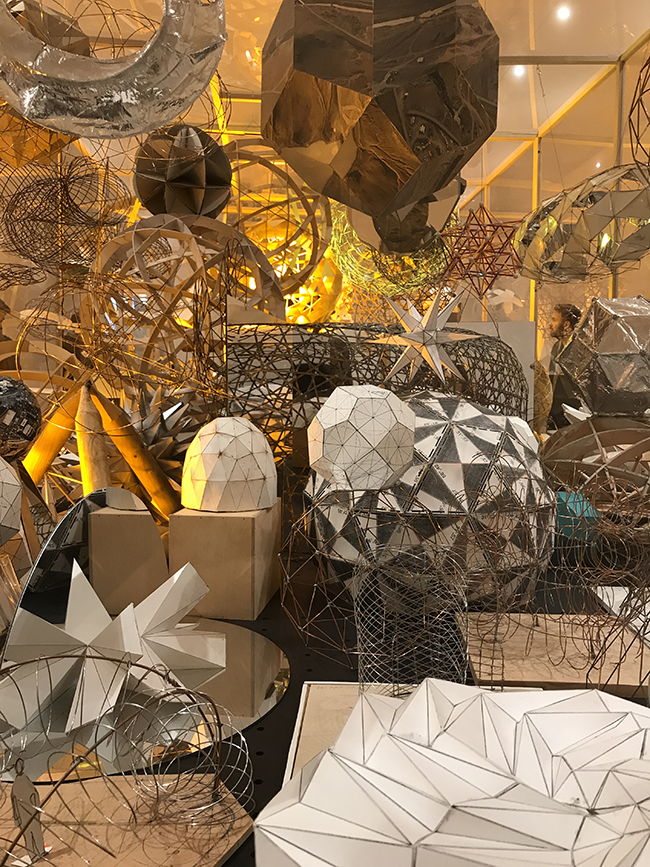
Close up of models in model room
These models are made from different materials including copper wire, cardboard, paper photocopies, Lego, wood foam and rubber balls. For many years, they served as a reference ‘library’ for Studio Olafur Eliasson. Now, Model room is held at Moderna Museet, Stockholm, but the studio, and particularly its design and geometry teams, continue to create models and prototypes as part of its research.
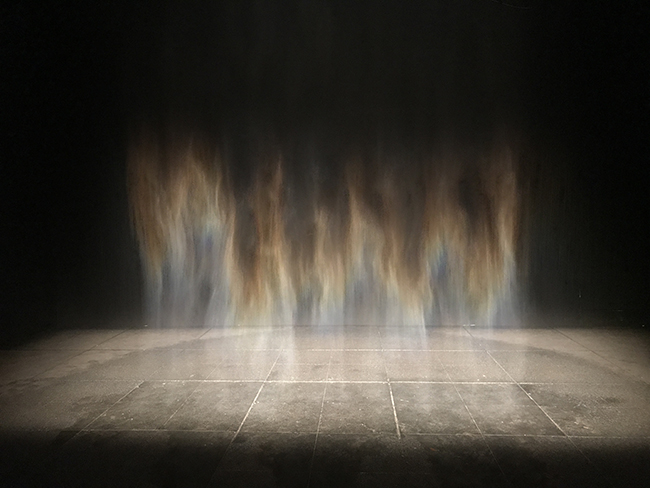
Beauty, 1993 by Olafur Eliasson.
The most entrancing experience is possibly the simplest: a room of quiet rain, through which rainbows play in the misty spray. Nozzles attached to a punctured hose spray a curtain of fine mist from the ceiling of a darkened space into the bright beam of a spotlight. From certain perspectives, a rainbow can be seen in the falling water; it shifts in intensity or disappears as the viewer approaches or moves away.

Your Blind Passenger, 2010 by Olafur Eliasson.
For sheer exhilaration, Your Blind Passenger probably offers the greatest thrill. Visitors enter a tunnel of luminescent fog, stepping forward uncertainly, hands stretched out into the swirling atmosphere. As you progress through the corridor, you move through zones of different hues. ‘Blind passenger’ is the Danish expression for a stowaway.
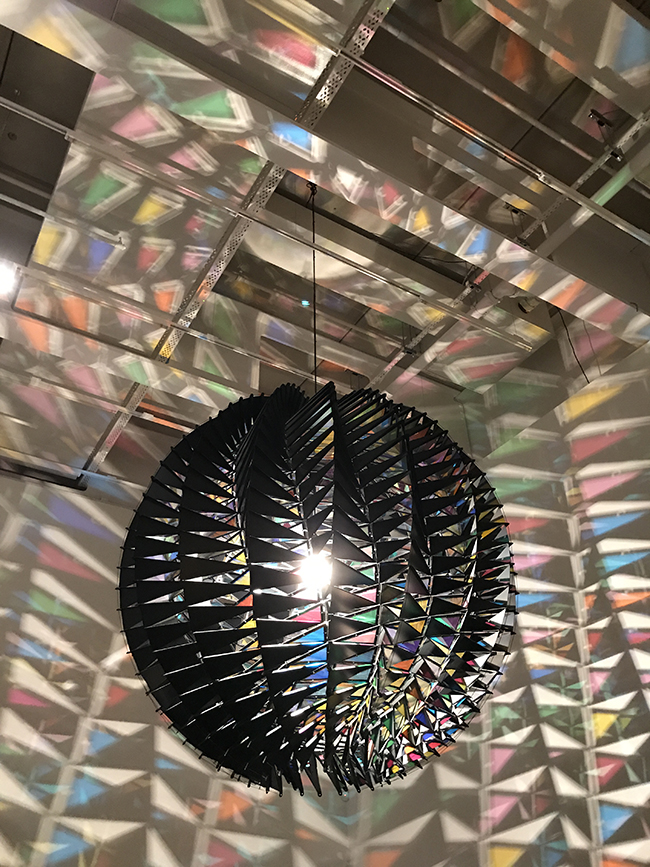
In real life, 2019 by Olafur Eliasson.
Once exiting Your Blind Passenger – you enter a room which focuses on kaleidoscope’s as the main source of research. For the artist, the kaleidoscope offers more than just a playful visual experience. Multiple reflections fracture and reconfigure what you see.
Suspended from the ceiling above you is In real life – it is structured by a complex yet regular geometric principle. The artist is particularly interested in spirals, as they create a sense of energy within the object and outside it through the shadow and light play on the surrounding walls.
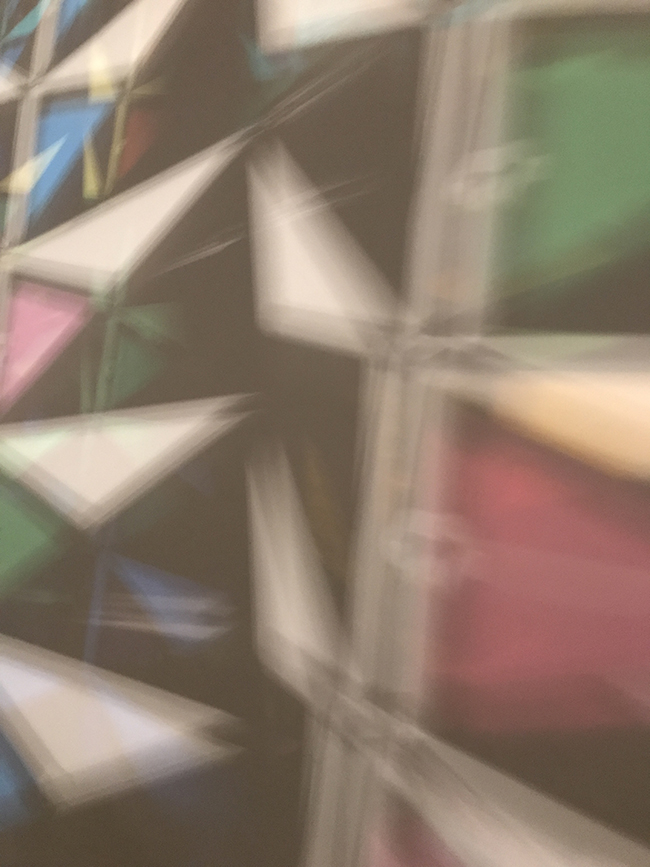
Close up of In real life light play on surrounding walls.
Final.mov: Your planetary window, 2019 by Olafur Eliasson.
For Your planetary window, a row of tapering shafts is set into a wall; each is lined with reflective glass to produce a set of kaleidoscopes through which visitors can see the environment outside. The shape of each kaleidoscope causes the illusion of a different three-dimensional form to appear within; fragmented reflections of the surroundings continually shift in response to the movements of the viewer.
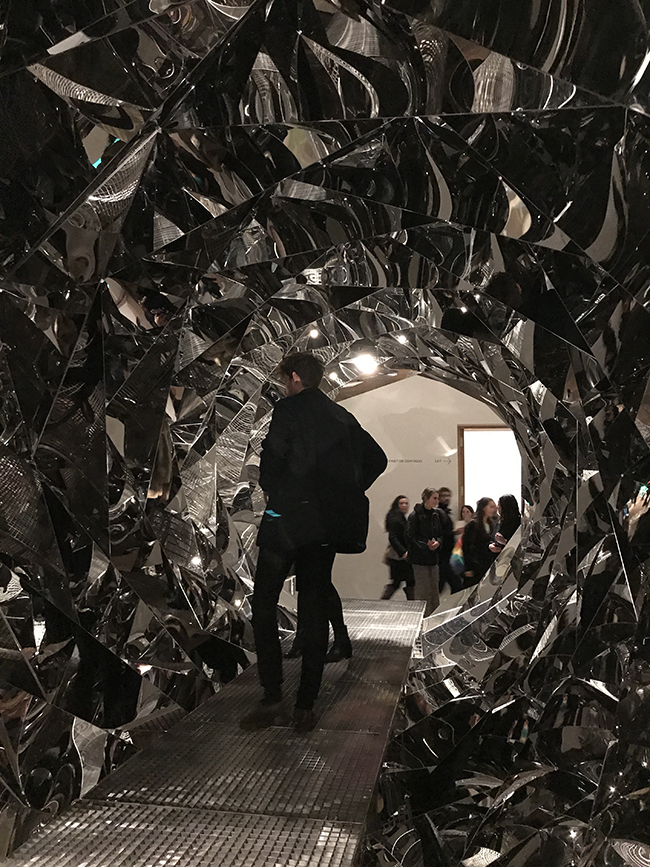
Your Spiral View, 2002 by Olafur Eliasson.
Your spiral view is an approximately eight-metre-long tunnel constructed from steel plates that are assembled into two sets of spirals coiling in opposite directions. Inside the work, you find yourself within a kaleidoscope, in which the space you have just left is reflected fragmentarily together with the view out the other side. The reflections enhance the dizzying sense of movement created by the jagged walls.
A description of a reflection or, a pleasant exercise on its qualities, 1995 by Olafur Eliasson.
%20new.jpg)
Photo: Franz Wamhof
This installation particularly had me entranced – as the lighting sequence was not altogether clear at first. A spotlight hanging from the ceiling of the darkened room casts light onto a concave mirror located on the floor in the corner of the exhibition space. The mirror directs a shaft of light onto another mirror, rotating on a tripod. This mirror completes a full revolution in 30 seconds, reflecting, as it revolves, an irregular splotch of light onto the reverse side of a round projection screen, which is fixed to the ceiling at an angle and runs down to the floor, blocking the space. I might also add, that visitors were also interacting with the installation by holding their arms up and obstructing the spotlight onto the concave mirror in the corner, which in turn altered the light effect on the projection screen.
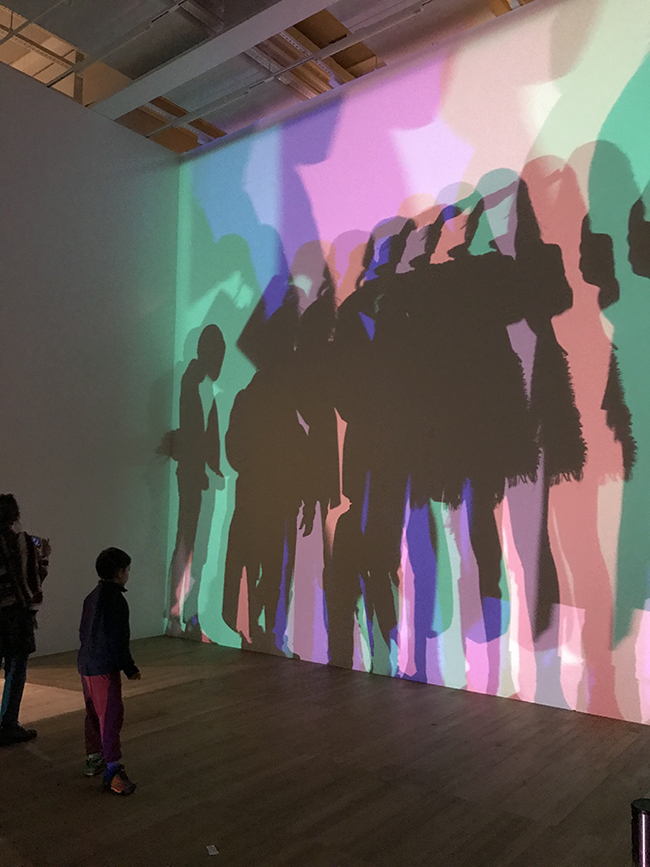
Your uncertain shadow (colour), 2010 by Olafur Eliasson.
Your uncertain shadow (colour) consists of five coloured spotlights, directed at a white wall, and are arranged in a line on the floor: a green light positioned next to another green light, followed by a magenta light, an orange light, and, finally, a blue light. These colours combine to illuminate the wall with a bright white light. When the visitor enters the space, their projected shadow, by blocking each coloured light from a slightly different angle, appears on the wall as an array of five differently coloured silhouettes. A brilliant idea – and the installation only possible with human interaction!
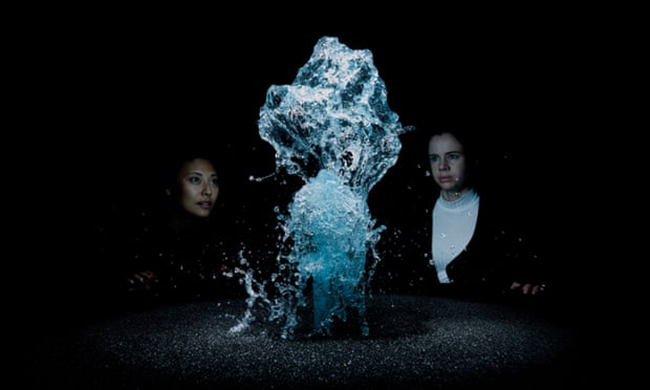
Big Bang Fountain, 2014 by Olafur Eliasson photo: Anders Sune Berg.
This installation really captured my imagination. A strobe light illuminates a fountain of water in this darkened chamber, freezing its movements into a sequence of ever-changing sculptural forms. Each strobe lasts only a fraction of a moment. A visual thunderclap that creates terrific after-images in the brain. Photographs do not do this piece justice – a must see in person!
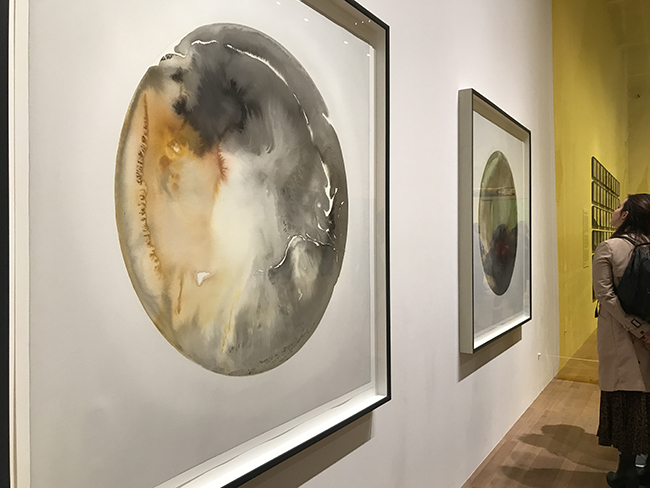
Glacial currents, 2018 by Olafur Eliasson.
These artworks do not use light as the medium but I think they are worth sharing all the same. Eliasson often uses glacial ice in his work. Sometimes, the ice is intended as a call for action against the climate emergency. Warmer climates have caused the Greenland ice sheet to lose around 200-300 billion tonnes of glacial ice each year, a rate that is expected to increase dramatically.
The watercolours were produced using chunks of ancient glacial ice that were fished from the sea off the coast of Greenland. The ice was placed atop thin washes of colour on a sheet of thick paper. As the ice gradually melted, the resulting water displaced the pigment, producing organic swells and fades of colour.
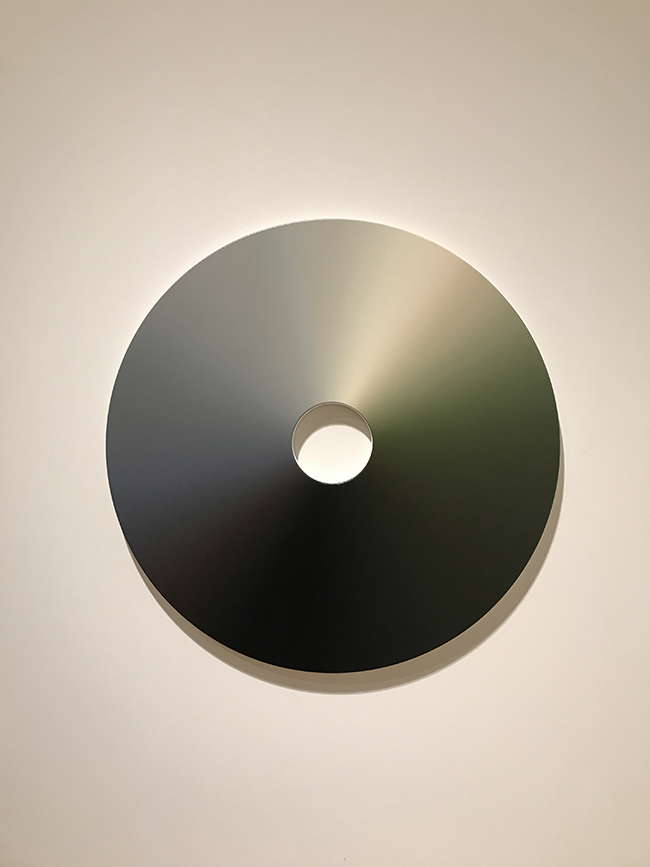
Colour experiment no. 81, 2019 by Olafur Eliasson.
This installation also does not use light but does look into colour theory. Colour experiments relate to an ongoing series of Colour experiment paintings which began in 2009 when Eliasson started analysing pigments, paint production and application of colour in order to mix paint in the exact colour for each nanometre of the visible light spectrum.
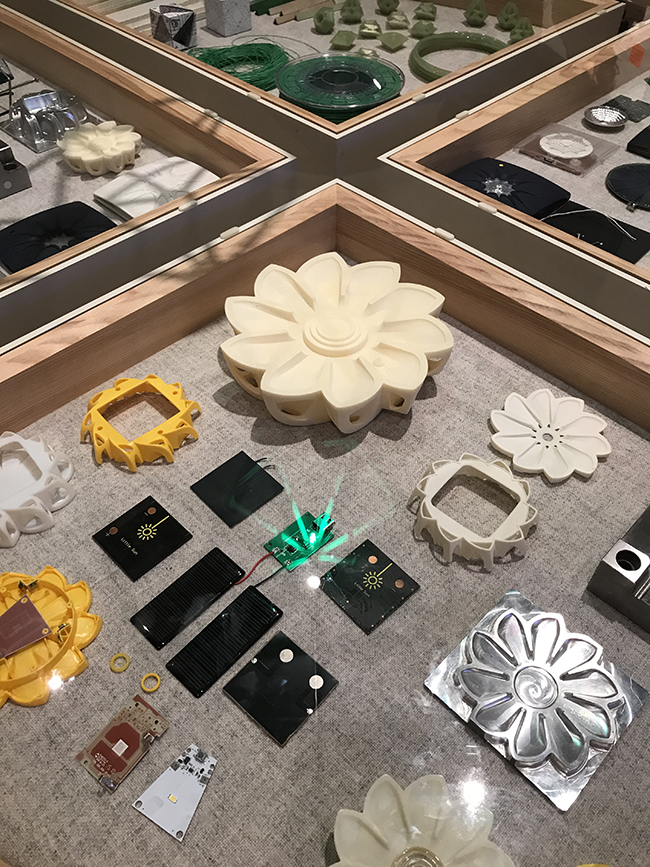
Little Sun Prototype Table
This photo is of prototypes made during the design development process for Little Sun and all its variations. The solar light-based project is a work of art that works in life. With Little Sun, light becomes a vehicle to affect change in the everyday lives of people across the globe, providing a way to live independently outside the electrical grid system. Eliasson worked with engineer Frederik Ottesen to develop the Little Sun solar LED lamp in order to get clean, affordable light to the 1.2 billion people worldwide without electricity, living in ‘off-grid’ areas.
Designed in close dialogue with users in Ethiopia, Little Sun is the first solar lamp to incorporate aesthetic and practical feedback from off-grid African regions. The Ethiopian meskel flower, a national symbol of positivity and beauty, inspired the lamp’s unique design.
Little Sun’s global impact (as of December 2019):
Lamps distributed worldwide = 1,100,941
Lamps distributed off-grid = 647,574
Lives changed off-grid = 2,826,661
Extra study hours for school children off-grid* = 36,485,160
Saved on energy expenses in off-grid households = $130,654,530
Tonnes of Co2 reduced = 697,243
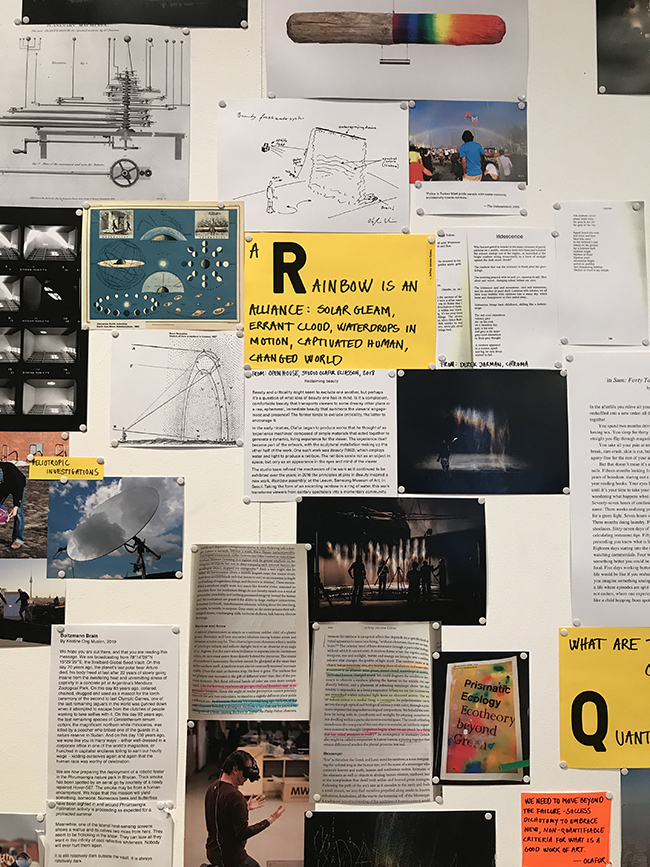
Close up of a long pin board wall with clippings from the teams research surrounding key words in alphabetical order.
As the exhibition comes to a close you are guided into an area called The Expanded Studio. For some time, Eliasson’s practice has extended beyond making artworks, exhibitions, and public sculptures. He has worked – with his studio and with outside collaborators – on architectural projects, a cookbook, an art school, and on dance projects. He has founded an architectural practice, called Studio Other Spaces, with his long-time collaborator Sebastian Behmann, and initiated projects directly addressing issues facing the world today. These include projects to do with renewable energy (Little Sun), climate change (Ice Watch) and migration (Green light – An artistic workshop). These build on Eliasson’s long-held interests in the environment, light and community that led him to make the kinds of works in this exhibition.
The long pin-board wall photographed is based on the walls in the studio where teams of researchers and craftspeople, as well as Eliasson himself, share questions, articles, images and news clippings. The materials are arranged around keywords in alphabetical order.
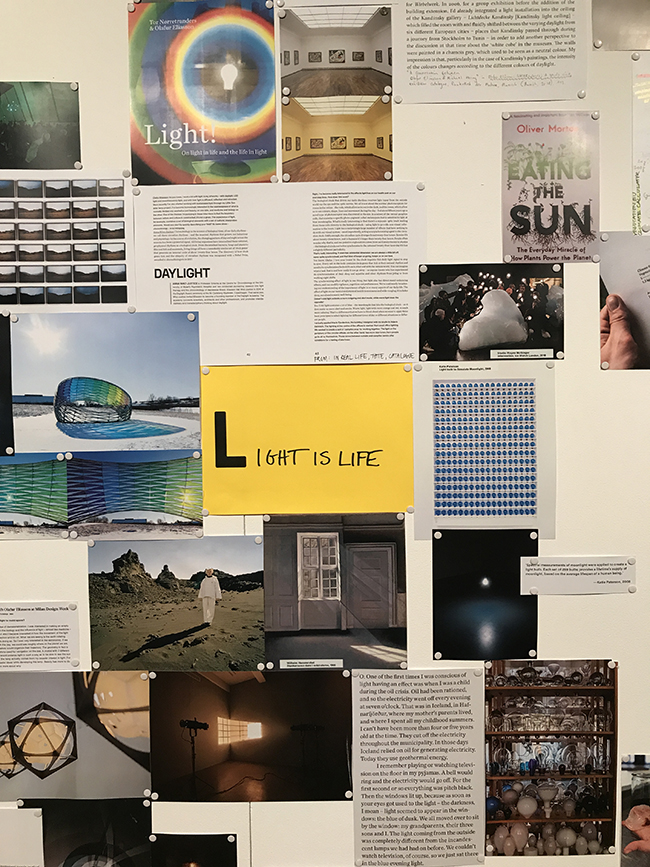
Close up of a long pin board wall – LIGHT IS LIFE!
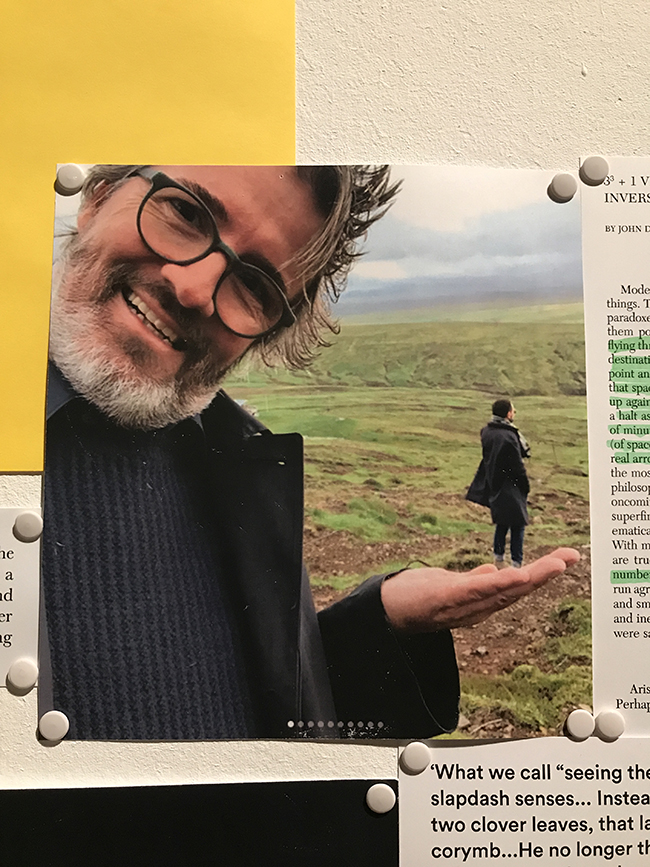
The man himself – Olafur Eliasson!











